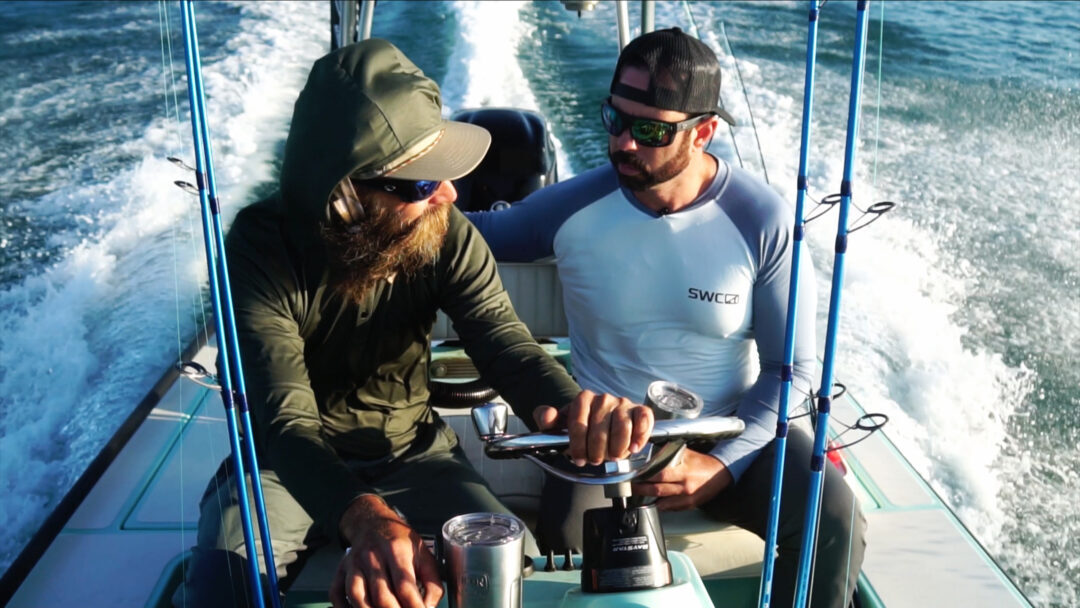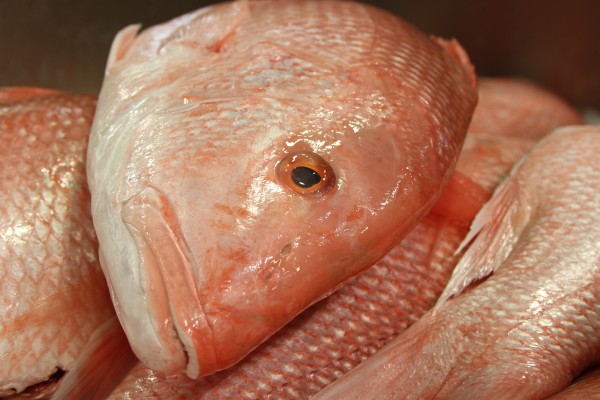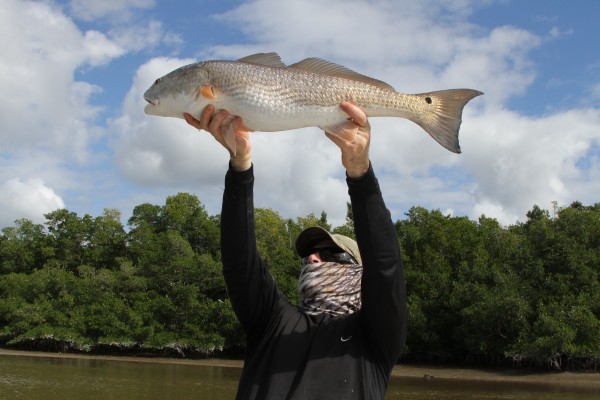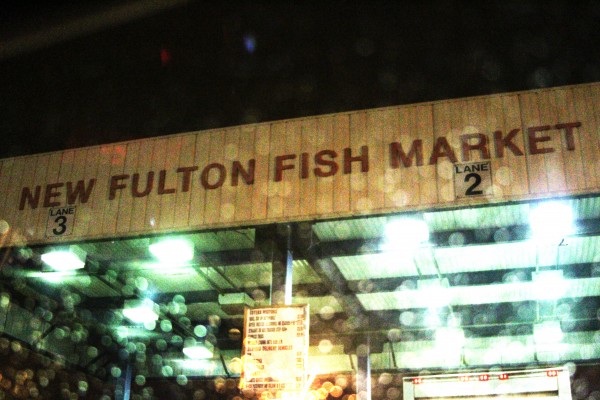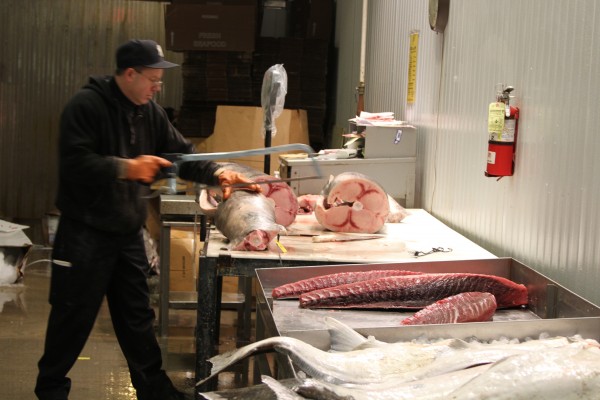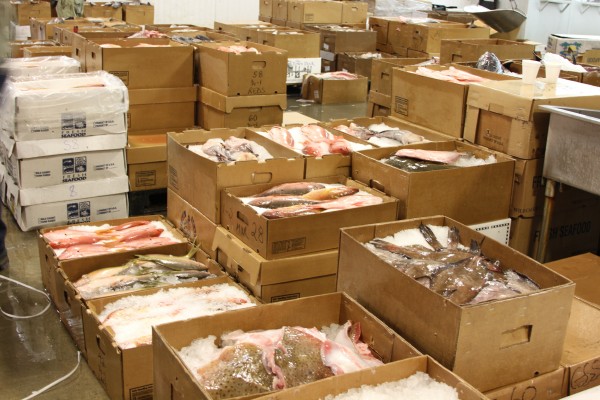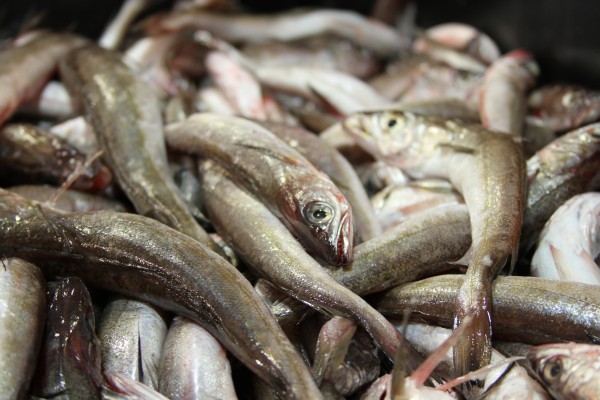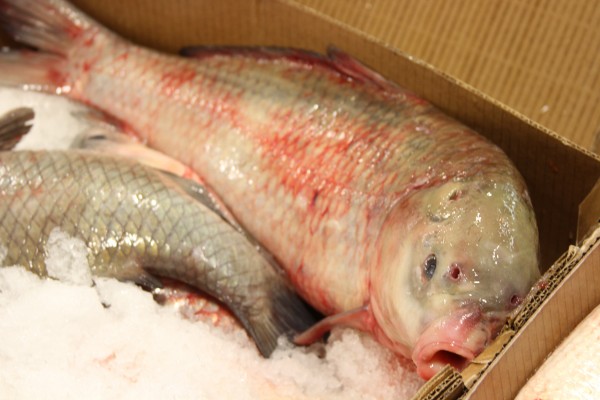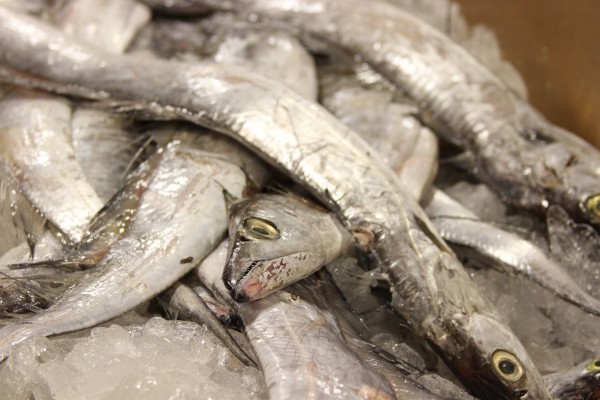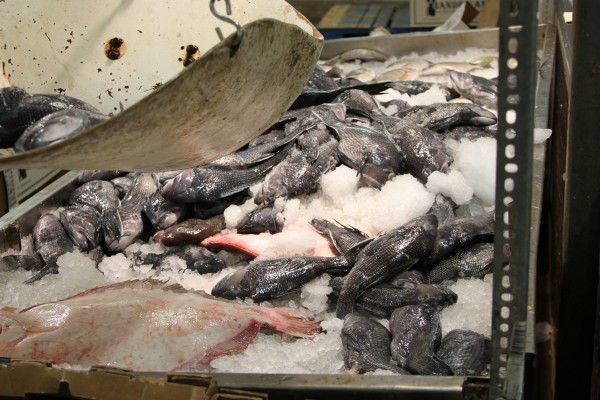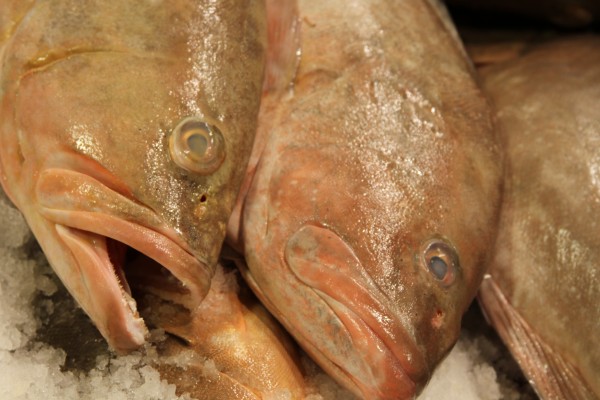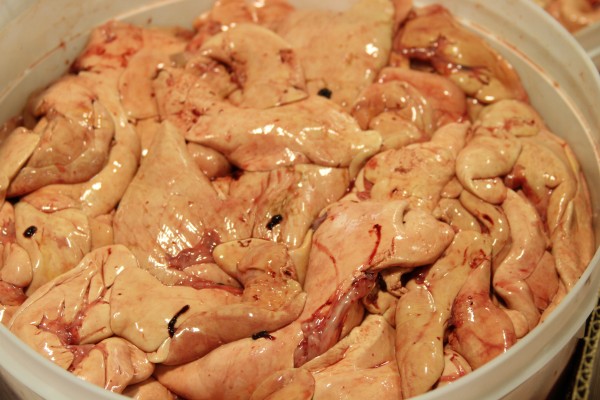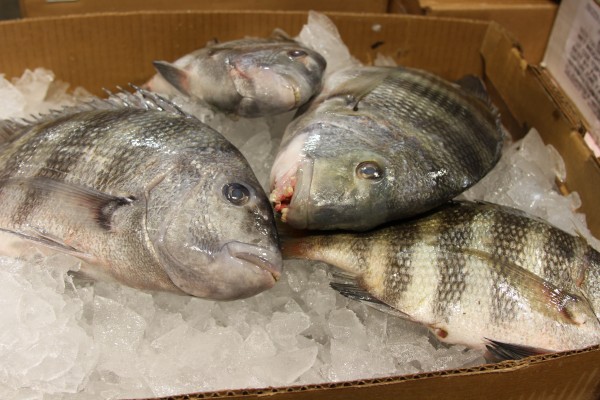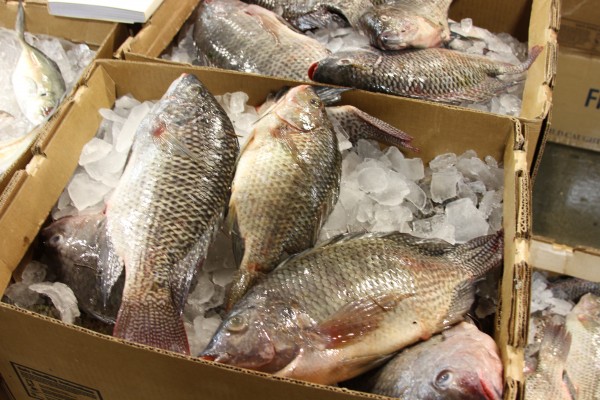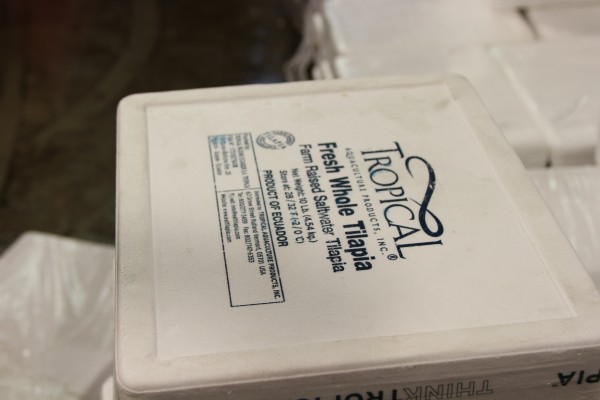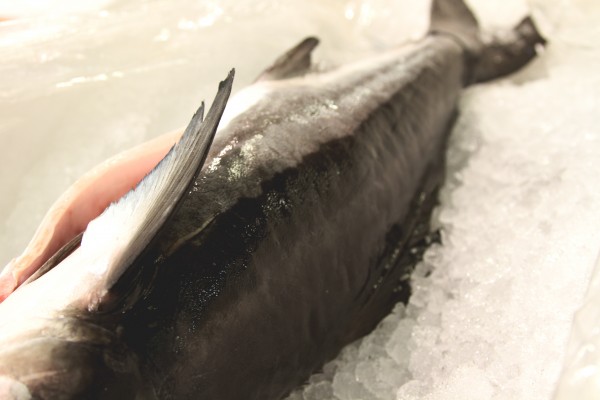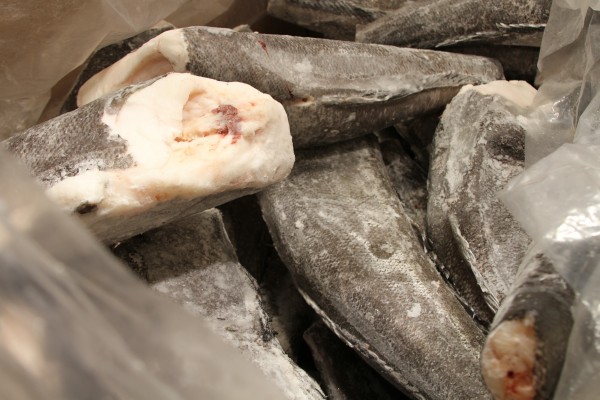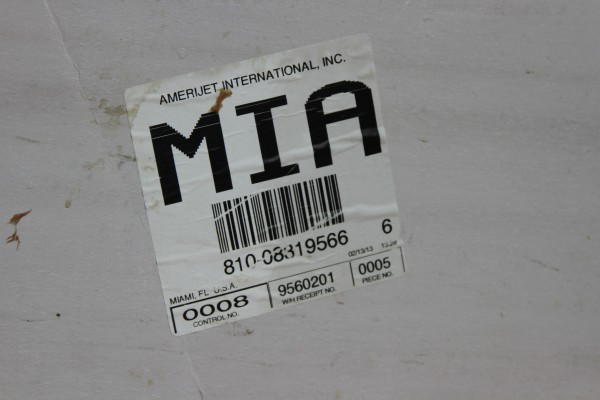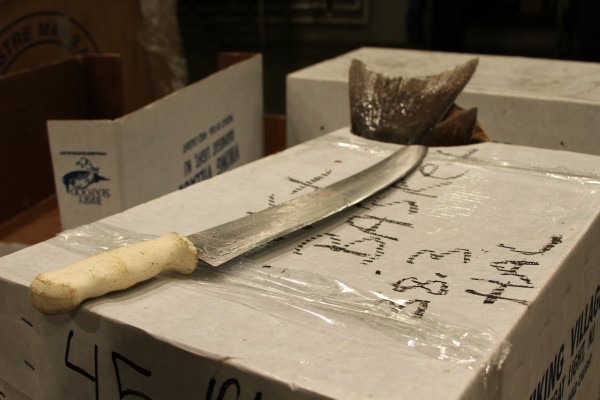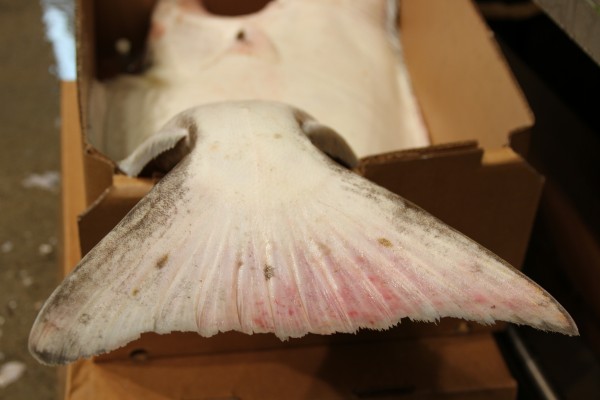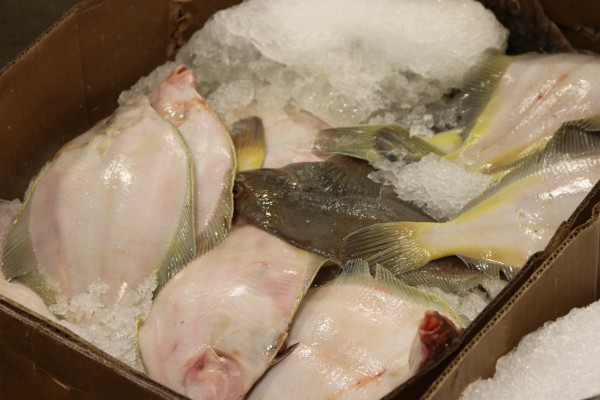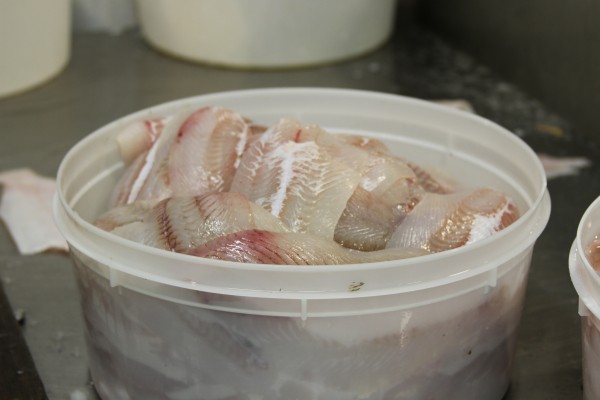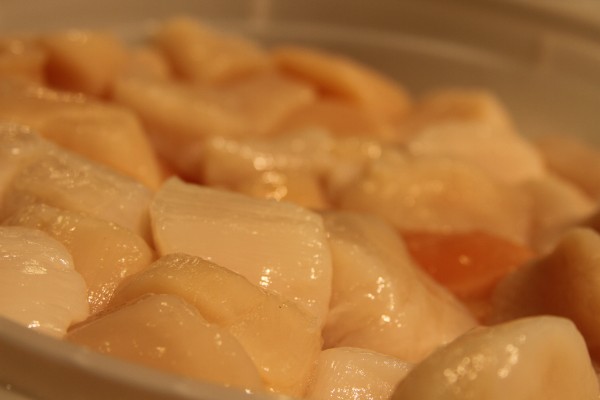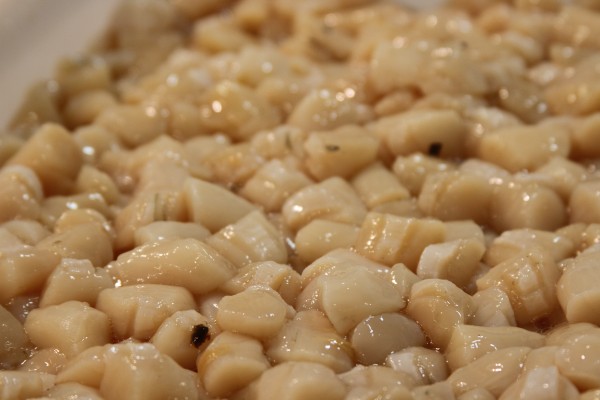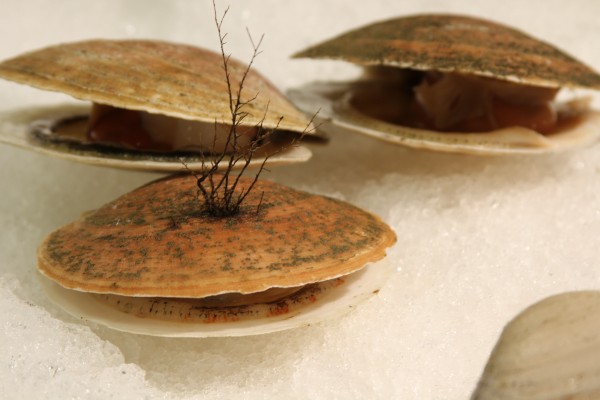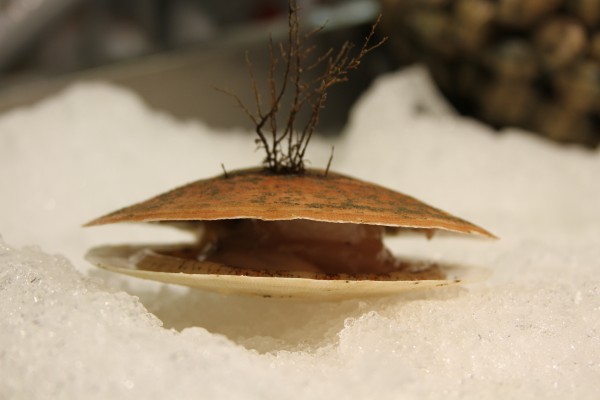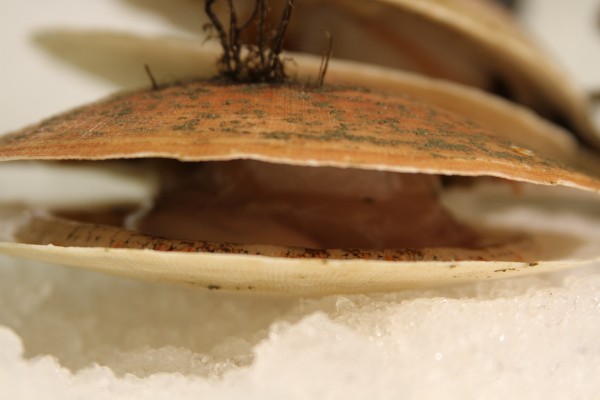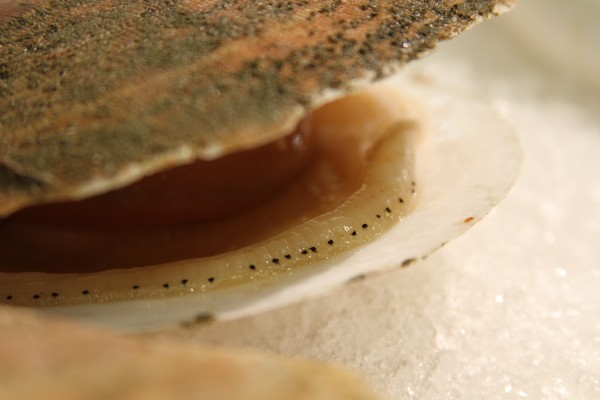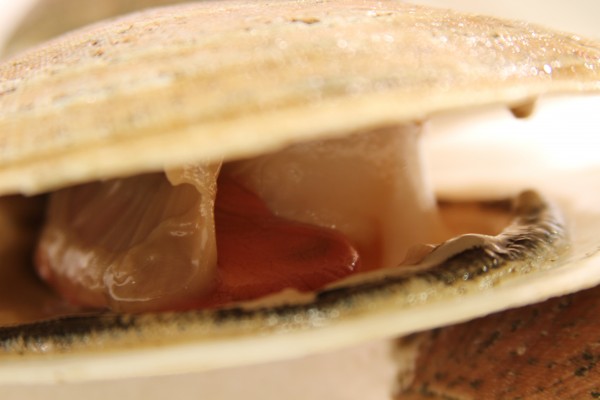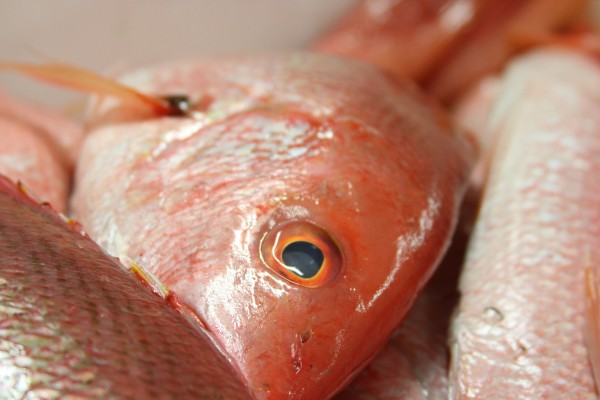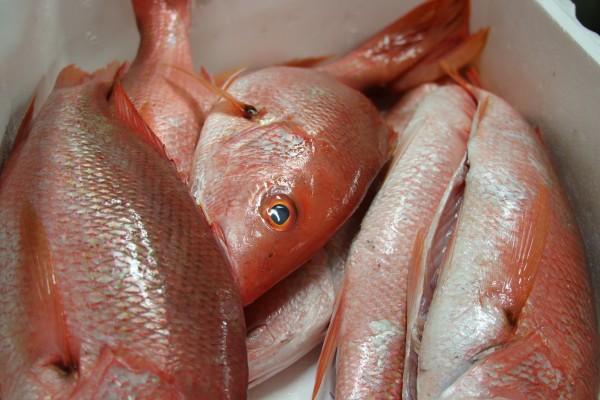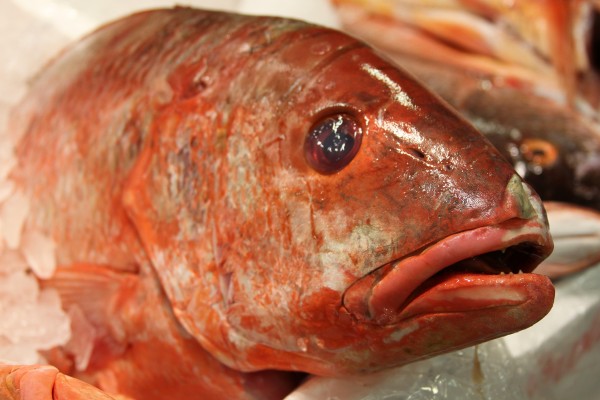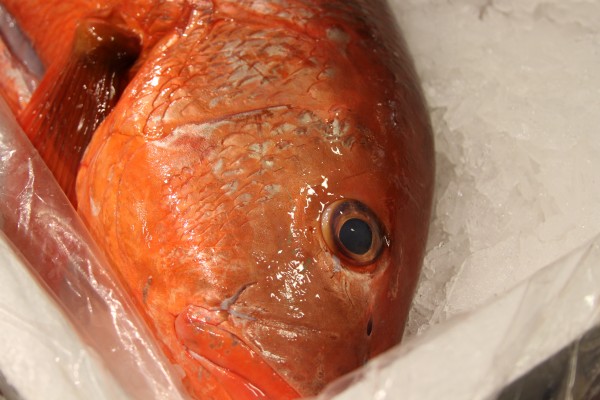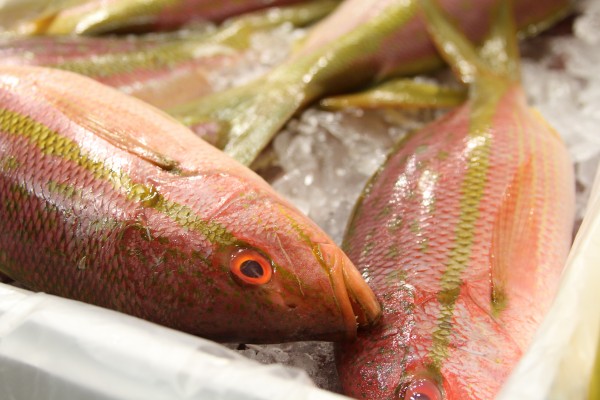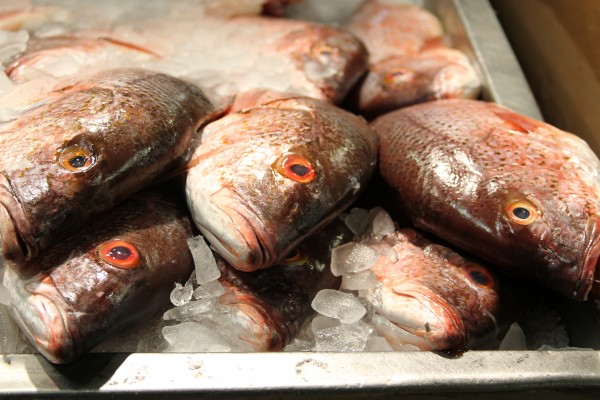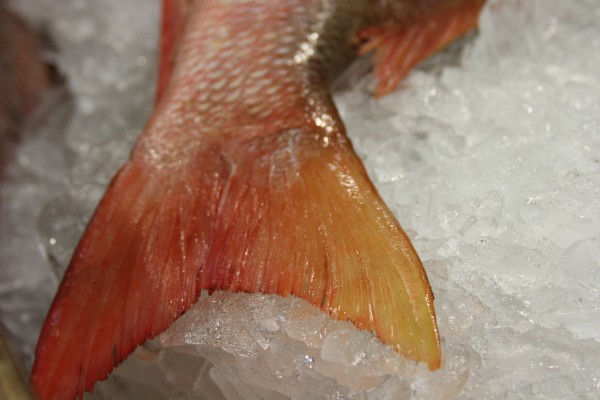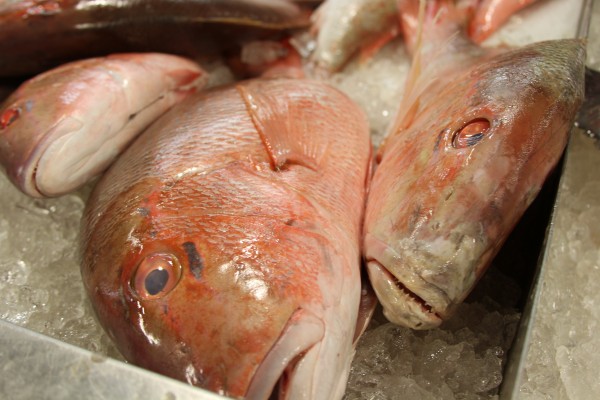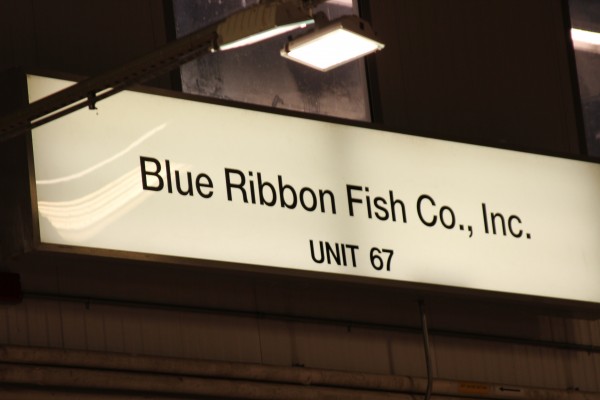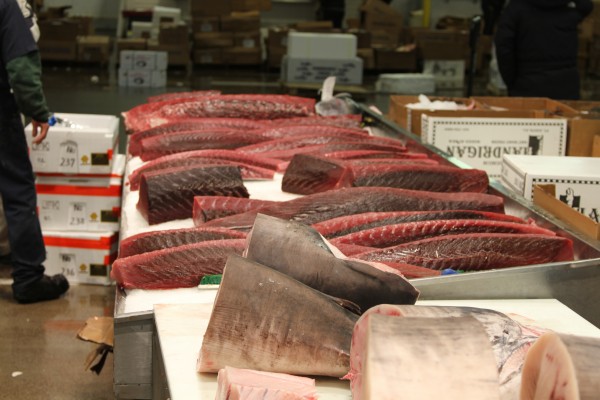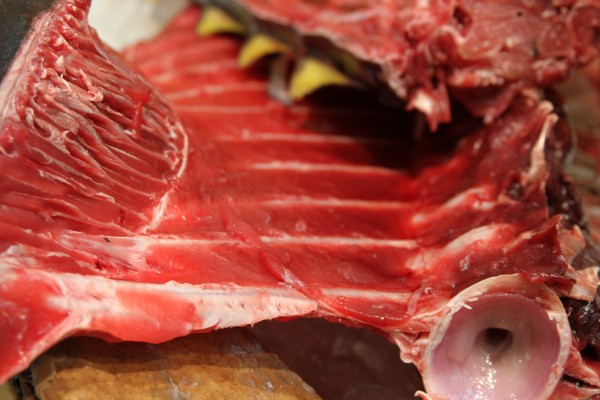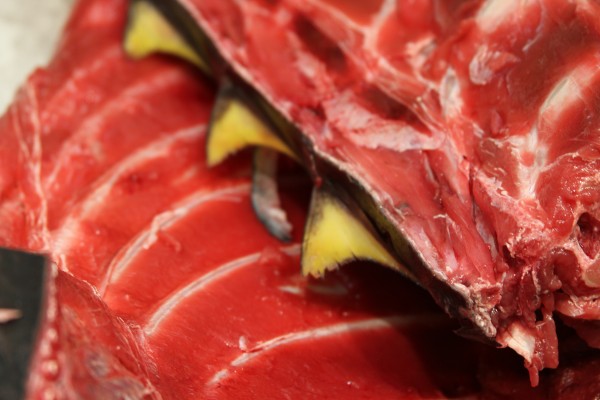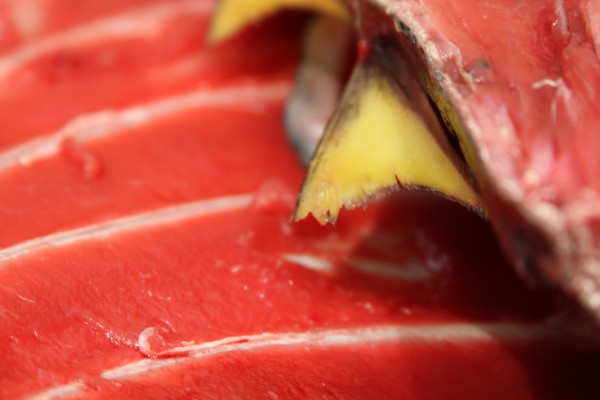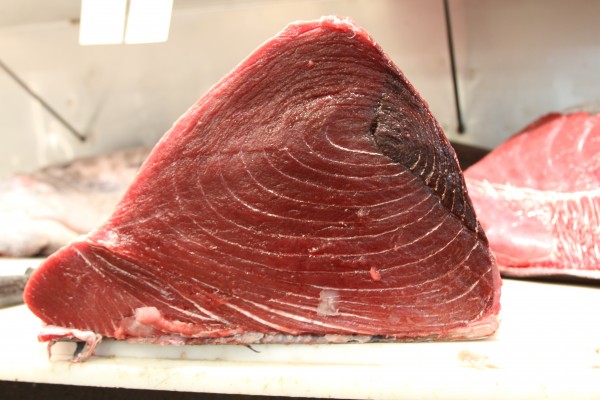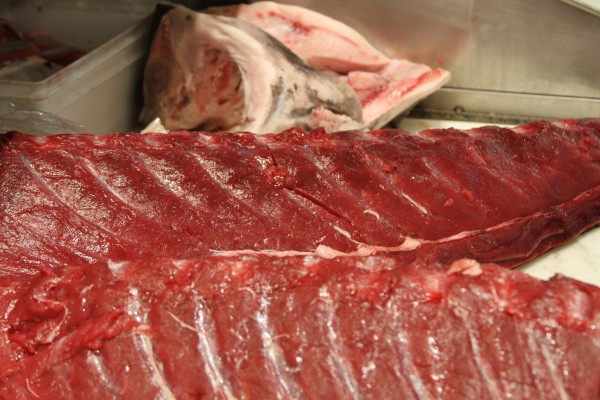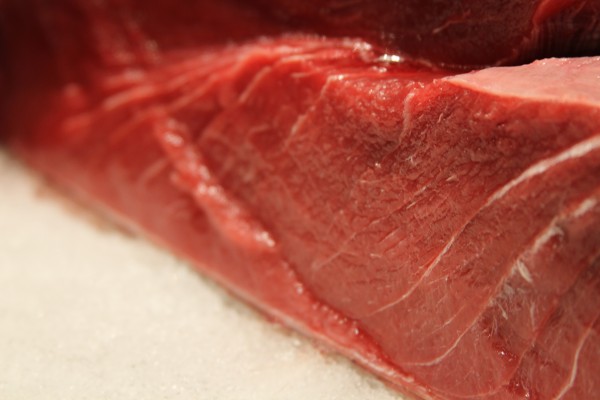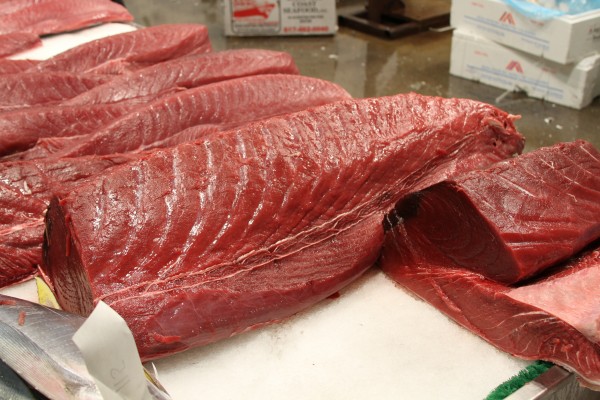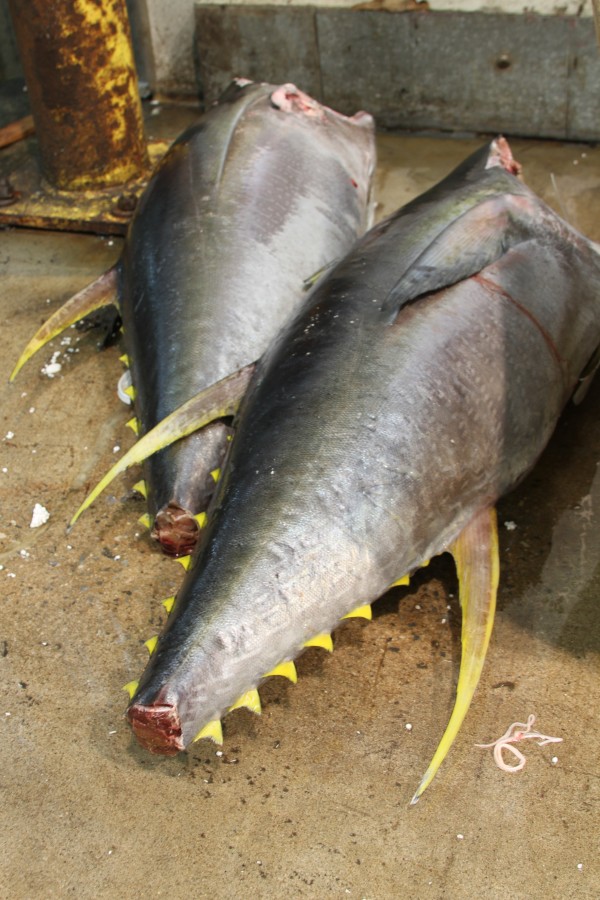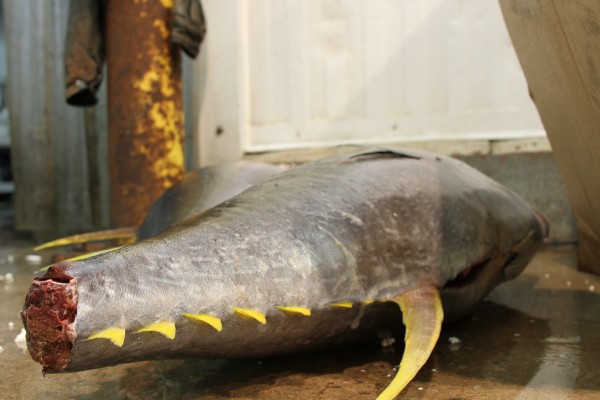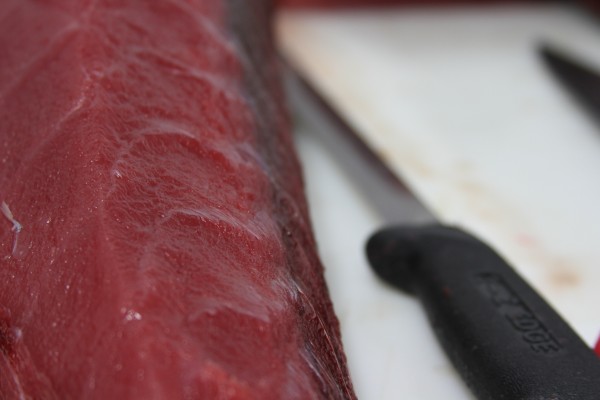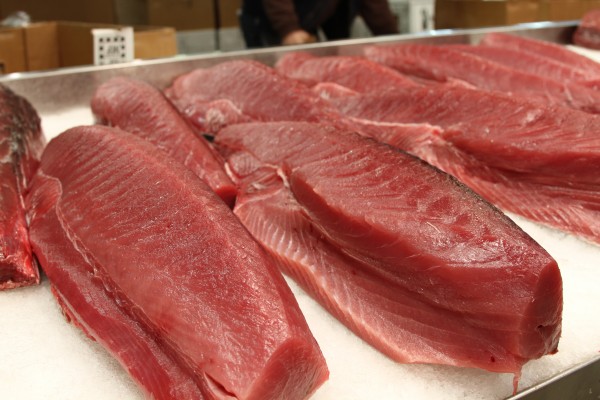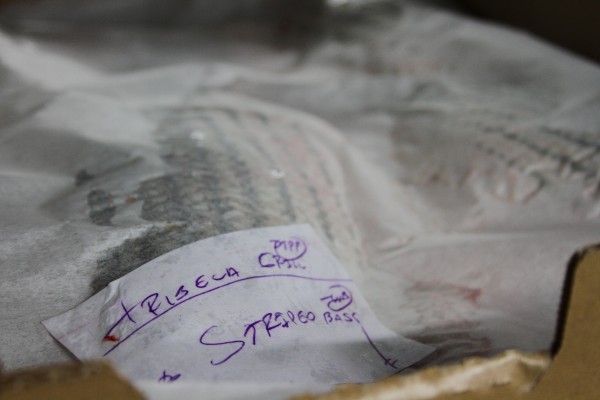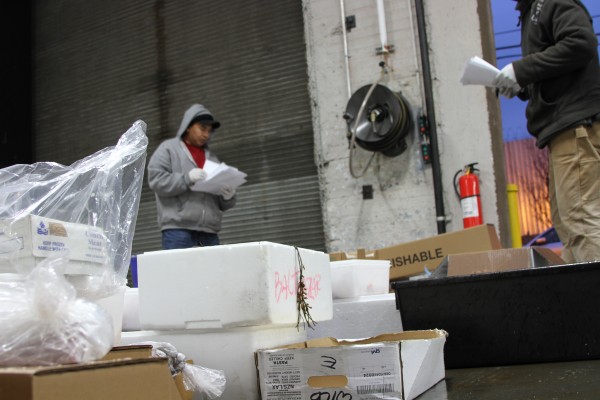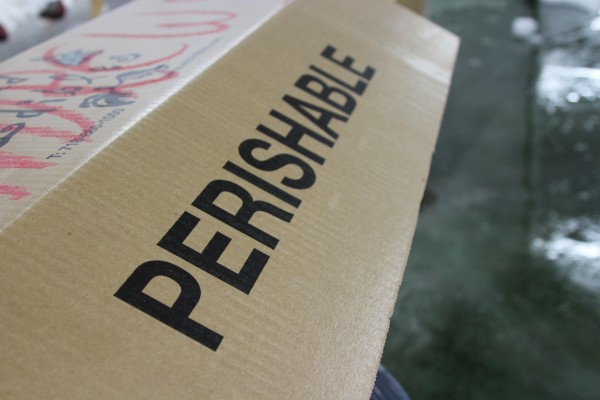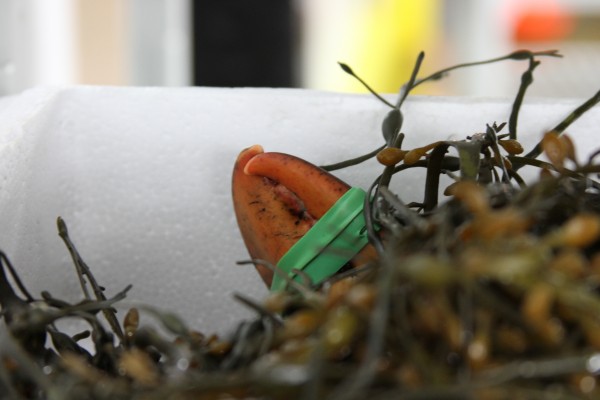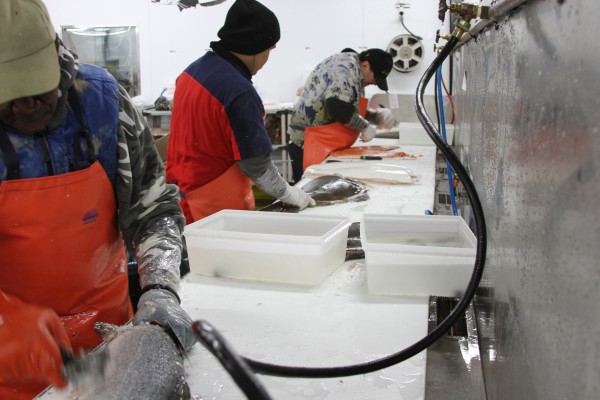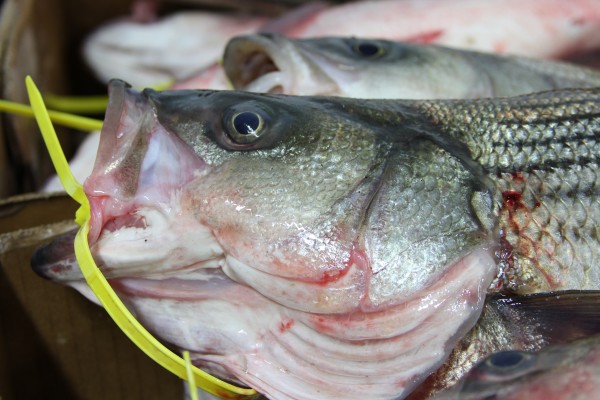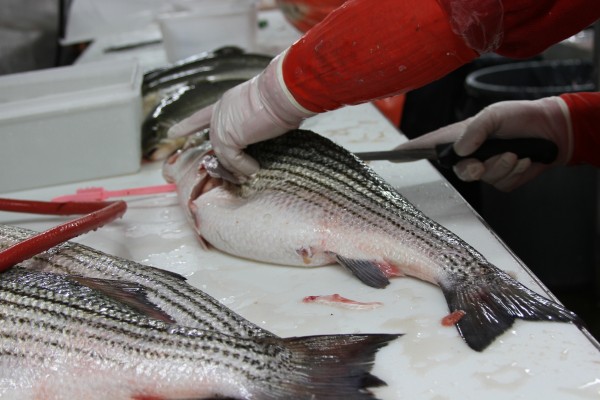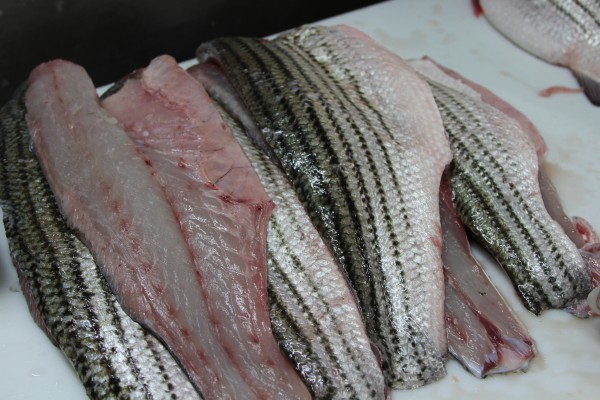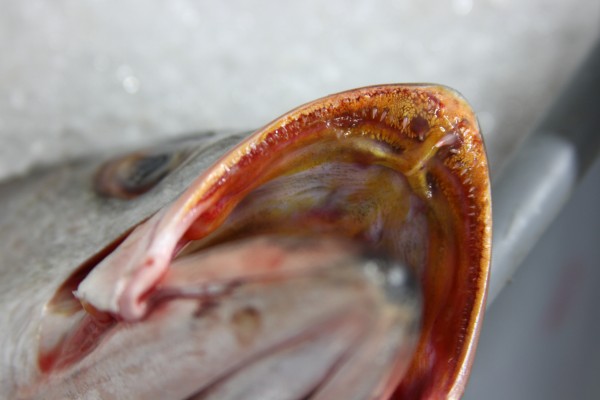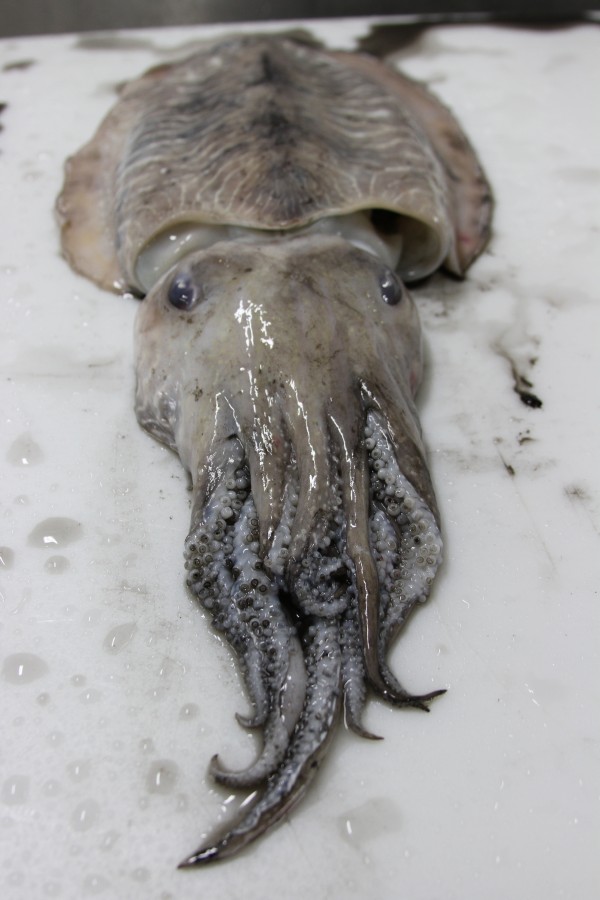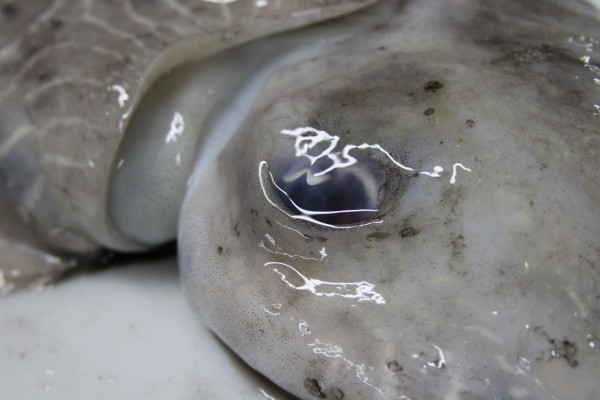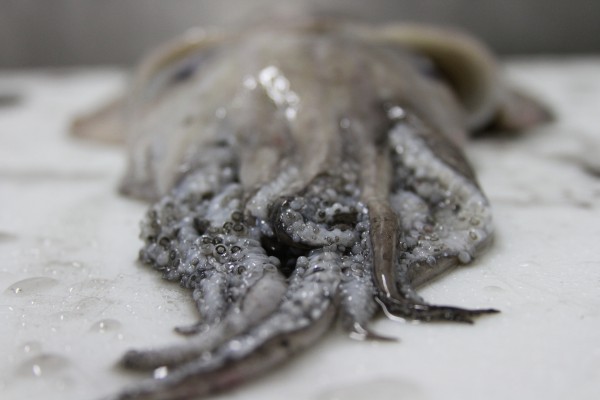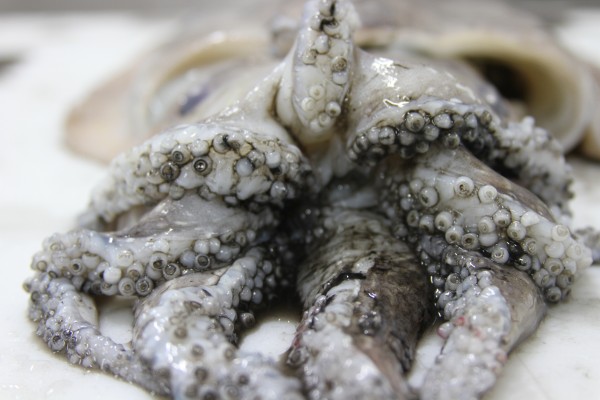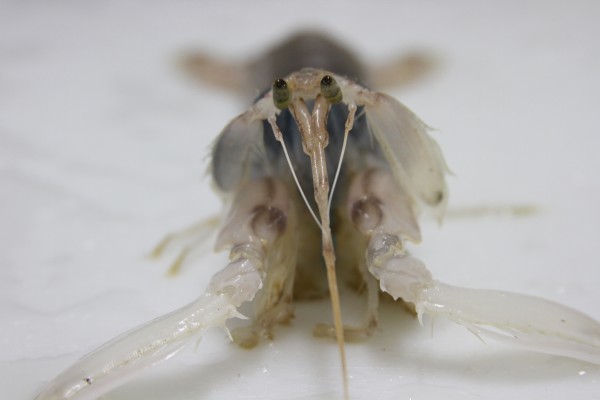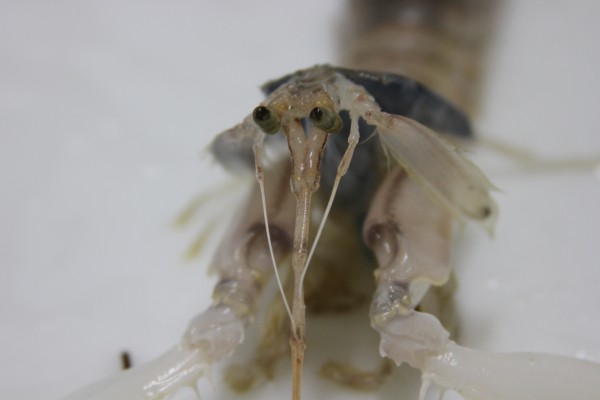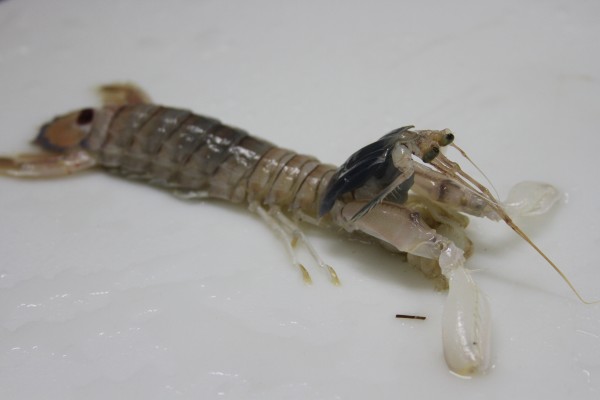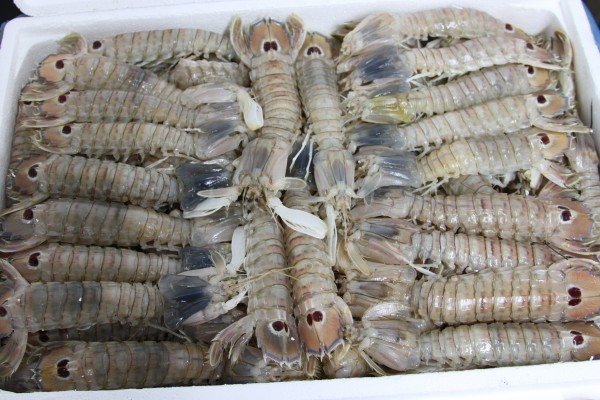Ferrying deceased fish, glistening effigies to a former prowess, onto to their final resting places is my profession. I do not dispense the deathblows, as I am but a humble butcher. I lay no judgement upon the fish beyond that which dictates the preparation of their flesh. I move them quickly and freshly onward through the afterlife, and no second thoughts are accorded to them. The process is much like the ice in which the fish are brought to me. Cold.
And it is the pursuit of live fish, still possessed of that balletic, piscine torsion that moves them through their watery lives, that is my passion. I battle these fish with brains and brawn, and I lose much more often than I win. I take the utmost care to release them unharmed back into their environment, and I worry that they will not live forever after I send them on their way. The act of hunting and catching a fish is humbling, and it consumes my thoughts. It is an act of love. Of reverence.
And as such it is a divergent, fishy limbo in which I exist. There certainly is a Machiavellian air to it. On one day I’m kissing this redfish and whispering my most sincere thanks to that redfish and the next day I’m carving up and selling a fish taken from waters not too far removed from where said redfish were released. If I were playing at some strange game it would be a cruel one to say the least. Though I assure you that’s not the case.
In all seriousness though it is an interesting space to occupy in terms of how I’m forced to think about fish. When I’m on the clock my thoughts center on how are fish killed, which fisheries support fish killing most effectively, how people are working to maintain sustainable rates of fish genocide, and which dead fish to peddle to customers. It’s a weird place to go when all I want to do when I’m not there is hunt and release living fish.
And to be fair, all the decisions, in terms of which fish to carry, cook, and sell are for the most part sustainably minded when made, thus allowing us to support the best fisheries possible. It doesn’t always happen that way, with us getting the most sustainable fish out there, but we do our damnedest to see that it does most of the time. At the end of the day though, I’m working for money and the emotional side runs very low. I have to turn off the angler and sell some fish. The angler being the guy who feels bad for two days if a redfish bleeds a little when the hook comes out.
I suppose that I should be more conflicted about my relationship to fish, living and dead, given that each group informs my life in a fairly major way. But I’m not. I get my grim reaper on as needed and I try to ignore my other anglerish feelings when that happens. Usually it works pretty well. I’m sure the Swiss can relate to this sort of thing.
And so, it was with that dichotomy between the fishiness of my personal and professional lives in mind that I journeyed to the New Fulton Fish Market at Hunt’s Point in the Bronx on a wet February morning.
Grey spittle fell out of a black sky raftered with low, heavy clouds as we steered through the industrialized south Bronx at 4:30AM. Ozone and the freestone smell of wet asphalt filled the air in the wake of the storms. Security lights hung from the eaves of the squat, two-story warehouses that line the streets and run in a desolation of dark concrete foothills in every direction, cast dull blooms of yellow light onto heavy steel doors. Fleets of trucks and vans. Cracked asphalt. There are above ground power lines here.
All of it is a far cry from the subterranean complexities, machined canyons and exalted vistas of lower Manhattan where dead fish were once dealt for nearly two centuries.
A truck passed in the opposite direction. The only other traffic we’d seen. My boss leaned forward and squinted out the window. He shook his head.
“I can never fucking remember how to get out here.”
He motored us through a traffic-light and broke the vehicle momentarily in the intersection and with a glance in the opposite direction made a last turn. We drove on and a long quiet minute passed before the gates to that fishy perdition were revealed to us. Red block letters all lit up in that green fluorescent pallor that belongs to carnival facades and bulbs that are left on too long spelled it out for us. Out beyond the market entrance and the edge of the Bronx mainland the East River heaved against an incoming tide and the wash of lights from the far shore shifted over the black water like rafts of skim ice.
The toll both at the New Fulton Fish Market is not unlike the one you must pass through on the eastern side of Everglades National Park on the road to Flamingo. A couple of lanes in and out of the property are all there is, and I must admit that I had a feeling of excitement on arriving at the gate to the NFFM similar to the one I had on first arriving at the gates of ENP. Granted we weren’t facing another hour of driving this time and the $7 tariff, good for only one entry into the site, is a bit steeper than what you’d find at the Park, and there would be no redfish. Nonetheless, I was pretty stoked to see what delicacies awaited me on the far side of those toll booths.
We drove past the gate and steered towards the parking area. The lot for civilian vehicles was two-thirds full and nearly all the vehicles there were rimed in their entirety with beads of rainwater. The NFFM opens daily at 1AM and I would imagine that most of these had sat in those spaces and weathered the storms that had swept the Bronx hours before. An adjoining parking lot for the vans and trucks of vendors, wholesalers, and retailers was full to the brim and there was much rushing about in the loading and unloading of seafood.
The facility that houses the actual market lay just beyond the parking lots and on stepping out of the car the sight of it gave me a bit of a pause. It is…gargantuan.

The original Fulton Fish Market (photo not found) opened in 1822 at the eastern end of Lower Manhattan’s Fulton street is the oldest operating wholesale fish market and second oldest fish market overall in the United States. For 183 years the Fulton Fish Market operated at its original site beneath the Brooklyn Bridge. In that time it survived five fires, a piling collapse that sent the market tumbling into the East River, and a century of involvement with organized crime. Due mainly to overcrowding, refrigeration that ranged from inadequate to nonexistent, severe removal from major highway access, and other factors that were continuously cramping its style, the old Fulton Fish Market relocated to this building at Hunt’s Point in the Bronx and was renamed the New Fulton Fish Market in the fall of 2005. At 400,000 square feet the new facility looks like it would be better suited to servicing Atlas rockets than acting as an auction block for fresh seafood. Though the size of it makes sense when you take into account the fact that the NFFM is the second largest seafood market in the world by size behind Japan’s Tsukiji market and that over $1 billion in revenue is generated within those walls every year. And if you have any concept of what wholesale seafood prices are (low, relatively speaking) then you understand that an enormous amount of fish has to pass through this market to hit that mark. Basically all the fish.
We set out across the parking lot, leaving the sleepy Bronx, still washed in the darkness of predawn, behind and made our way into the immense refrigerator looming before us.
Any preconceptions that you may have of a fish market where salmon are hurled between slickered men yelling colorful things, while tourists meander and flashbulbs snap are dead wrong. It is a serious business happening at the NFFM.
No shit, this was the very first thing that I saw on entering the market:
Who, me? Oh, I’m just hacksawing swordfish. No big deal.
I mean that’s badass. I was pretty nervous too when I shot the frame, because if the dude didn’t want his picture taken what recourse did I have against a hacksaw? Flash him to death?
That opening scene pretty much set the tone for the general mood of the place as well as the entire experience, which I would put in a word as, intense.
Fork lifts carting hundreds of pounds of seafood shuttle back and forth with no calm along the length of the hangar and they disappear and reappear from makeshift highways that lead allow access into and out of loading areas. The drivers are skilled and focused, but if they are looking one way and you’re not paying attention to where they’re tracking then you will be hit. You will be hurt. And it will be your fault. Those working the floor on foot wield hacksaws, fillet knives that push two feet in length, scimitars and still larger scimitars. Not a stall was to be passed that didn’t have at least two men working it and each armed with a heavy steel meat hook slung across his chest and at the ready. Despite the hard, salty appearance of the fishmongers gathered there, all of them were pleasant and accommodating and some, when I wasn’t in run & gun mode with the camera, even helped out in selecting the prettiest fish and even posing them for me. One asshole did scold me for trying to take a photo of a cod head severed clean off just above the eyes. It was awesome. He was a dick.
It’s also freezing in the building and loud too.
As for the fish, well, it was pretty unbelievable, and they put on a pretty good showing. One would be hard pressed to be left wanting for seafood in that room whether your pleasure be fresh, frozen, or both. There are no casual buyers here. Anyone in the building is looking to buy serious weight.
Basically any species of fish taken from domestic waters that supports a commercial fishery was available on that day. The same was true for farm raised seafood options as well. The sheer amount of fish that was iced out before me that day was staggering, there was just so much fish, and to think that this happens essentially 365 days a year at locations all over the entire planet is difficult to comprehend. But that’s a different story. Let’s check out some fish!
These are whiting. No to be confused with the southern whiting caught in the surf down Florida way. According to my boss, a 20+ year veteran of the seafood industry in NYC, these and local porgy account for about half of the fish sold at the market. Without them the industry would collapse.
These are a bit different from what Adam and Mark hunt, but they’re still carp. According to the United Nations, carp is the number one aquaculturally grown (farm raised) fish on planet Earth. Crazy. People really like carp, I guess. Fly fishing for them I get. It’s awesome. Eating them? Sure. Why not? Anyway, as far as I know there are no major domestic commercial fisheries for wild carp. I didn’t look very hard though, so don’t quote me on it. What? We’ve got a lot to cover.
Ribbonfish anyone? You can have them by the pallet.
Channel catfish from Louisiana. Nasty in life, nasty in death.
Atlantic cod, while tasty is not a very good choice sustainably speaking. While some fisheries are still viable, this species (especially in domestic waters) has been overfished to the point of collapse and it has never really recovered. This is why lobster stocks have risen so much in the last dozen or so years. There are no cod to eat them, because cod are overfished. Atlantic cod falls under the threatened umbrella and is labeled as vulnerable. I believe these fish are Icelandic, meaning they came from a fairly well-managed fishery. Which is like being the best player on the Washington Generals. You’re still awful, just not the most awful.
King mackerel out of Florida. It was nice to see a familiar face. Believe it or not these fish are actually a really excellent choice if you’re trying to be environmentally conscious. They grow fast, reproduce young, and the fishery, one that’s existed since the late 19th century, is really well managed. While kingfish do carry higher mercury levels, unless you’ve got a bun in the oven or you’re a five year old child, the health benefits far outweigh any health concerns. I mean whatever. I’m not a doctor, these fish are just really good for you. Granted, I would avoid eating a 40lb fish as they are nasty, but fish 25lbs and under are good to go. Fo’ sho’.
Black seabass. Local, delicious, everywhere at the market. Two separate stocks of Black seabass exist with North Carolina serving as the dividing line. Populations north of that line are above their target levels making them a good choice environmentally speaking. Southern populations are under a little bit more duress as they are in the process of being rebuilt from an over fished status. If you’re into sustainability buy fish caught in northern states.
Red grouper (not particularly good-looking red grouper either) out of Florida. These days red grouper populations in the Gulf are actually in pretty good shape despite being declared overfished in 2ooo. Strict harvest limits were set and these helped the population rebound in just under a decade. Currently Gulfs reds are managed under Individual Fishing Quotas (with these the season never closes, and fisherman are allocated catch totals which they can meet at their leisure) which seem to be effectively managing the species. However, current estimates of Atlantic red grouper populations are in the toilet.
This is like fifty pounds of monkfish livers. I would literally try to eat this entire tub given the opportunity. These are so delicious it makes me want to cry.
Death row convicts, post-mortem.
It’s funny, as delicious as these guys are I’ve never seen them on a menu in NYC or had anyone, fishmongers aside, up here know what the hell I was talking about when I’ve brought them up. Which is interesting when you consider that they were once plentiful in New York waters during the 1800’s and are in fact the namesake fish of both a body of water and a neighborhood in Brooklyn. It is highly likely that the decimation of wild oyster beds in the late 19th century is what drove sheepshead out of northeastern ecosystems. Now they’re pretty much nonexistent up here.
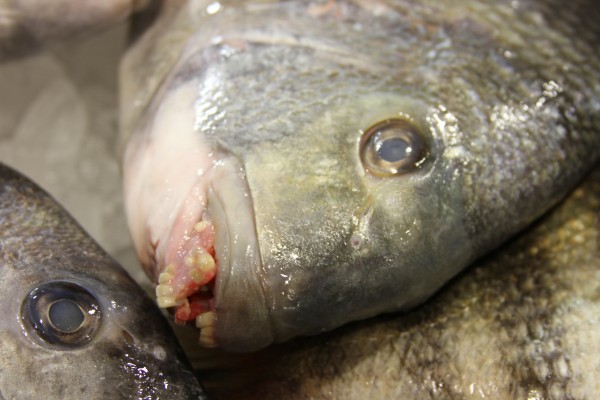
Shad. Wild populations are at an all time low. Overfishing, habitat destruction, and basically any bad thing that can happen to a fish species is happening to these fish. People love them for their roe (which is nasty) and their fillets (also nasty) have some value in the markets as well. Shad, a blast on ultralight tackle, are in a bad way and have been for some time. Bummer.
I just can’t be diplomatic here. Don’t even bother with farm-raised tilapia. I’m serious. They have zero flavor. It’s the most boring seafood on the planet. I’ve seen cardboard with more personality than a tilapia fillet. There is also a well documented dearth of Omega-3 fatty acid (that delicious life saving oil that is the very reason why having fish in your diet is so important) in these fish. Giving it a real”so what’s the point vibe.” Tilapia are loved by fish-farmers because they will eat basically anything and they have a “high stocking density.” This translates into “let’s jam 300 fish into a 35 gallon trash can and they will eat each others shit that’s great because we don’t have to feed them much else. They’ll be fine.” I’ve also heard tales that less reputable fish farmers will, instead of dumping tanks and cleaning them properly after a harvest, drop tilapia into the tanks to do the cleaning for them. Yum.
As it is an invasive species in the United States tilapia is available domestically only as farm-raised and the sale of wild caught fish is illegal. These are the epitome of garbage fish.
Cobia! As a gamefish cobia are just awesome. And if you’ve ever had the chance to target them, then I’m certain you’re picking up what I’m putting down. More importantly though, cobia biology makes them an excellent aquaculture candidate. Cobia are delicious and agreeable to basically any method of preparation, extremely resistant to fishborne disease and infection, they grow very quickly as young fish (meaning they hit harvestable size faster), they’re full of omega-3’s (good for the ticker), they can subsist on fishmeal substitutes (good for keeping mercury low and the environment healthy by not having to take forage fish out of it), and they spawn early and without issue when in captivity (easier to make more fish, quickly). Generally speaking, they seem to rather enjoy captivity and will even approach their human caregivers during feeding time. They’re like dogs. With…no legs…and…fins.
As the business and science behind aquaculture continues to grow, the biologic attributes of cobia will more than likely (at least in my opinion) lead the farmed raised members of the species to get all the high-fives and pats on the back. It will become a farmed fish that will be in very high demand across a number of different markets. I think.
This is how you’re Chilean seabass arrives at the market. In torso’s. Heads removed, tails removed, gutted, and frozen so solid that you could hammer railroad spikes with them. The Marine Stewardship Council asserts that sustainable fisheries exist for the Patagonian toothfish and that it’s cool to eat them, while I assert that they are full of shit. Poaching of these fish is rampant, with estimates from ten years ago putting the illegal catch at over twice the amount of fish harvested in accordance with fishing regulations. While significant efforts have been made, and with some fairly good success, to curtail illegal harvest of these fish, a lot of damage has already been done. Given a choice, I wouldn’t mess with these fish at all. They’re better left alone.
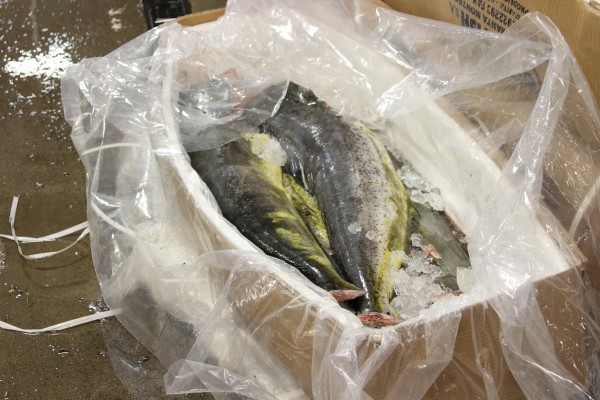
Mahi-Mahi: The fish so nice they named it twice. These guys and gals are most likely out of Central America, probably Guatemala, as a shitload of mahi comes out of there. As I understand it you can tell the fish are foreign because the faces and tails have been removed. Even though it’s a fairly small amount of weight compared to what you get from the rest of the fish, they are shipped such a long way that the extra weight would turn into significant extra costs and ultimately would drive the price too high to make it a viable export. Most fish I’ve seen taken from the eastern seaboard of the US are whole on arrival at the market.
These mahi-mahi make first landfall on US soil in Miami and are distributed further from that point of origin. Based on this, the amount of mahi harvested in Florida (Gulf and Atlantic) which is fairly small, versus Central and South American and countries with Pacific shorelines, which is a lot, I would venture a guess that if you live in Florida, depending on the restaurant or supermarket, it’s probably a coin flip as to whether or not you’re getting foreign mahi-mahi with larger operations tending more towards the foreign fish. Again, that’s just a guess based on things that I’ve overheard.
Atlantic halibut. The Atlantic fishery for halibut is unfortunately pretty beat up and has been for a long time. At the restaurant we only carry Alaskan halibut, as it is well-managed, super-sustainable and always entertains our endless lines of questioning about the guys on Deadliest Catch.
This is how sole fillets are made. These fish are cut so quickly it is mind-boggling. Like three cuts fast. And the dudes doing the cutting were laughing and chatting up a storm the whole time. Another day at the office I suppose.
Scallops were to be found in giant cheesecloth bags that held upwards of 30lbs each. In such huge quantity it was possible to literally smell how rich and intensely flavored scallops are. It’s almost overwhelming.
And of course the sweet, sweet Nantucket bay scallop was on hand as well. If you have never eaten one of these I suggest that you do everything in your power to locate them next fall (when they’re back in season) and eat them raw and by the fistful.
Live scallops in the shell. Just beautiful.
I didn’t know it until I started writing this post, but, just like a tree, a scallops age can be determined by the rings on its shell. And scallops can live up to twenty years.
The more you know!
The scallops have eyes. Up to 100 individual eyes.
See that orange mass inside the scallop? That’s the roe. It’s delicious. And I’m sorry, but if you don’t think scallop roe is delicious then we can’t be friends. Lucky for us scallops are pretty well-managed in the United States. Rotational closures, which shut down certain areas for a specific amount time while others are re-opened, ensures that populations have the opportunity to rebuild themselves before being harvested again. Good for the environment, and good the economy. According to NOAA the US sea scallop fishery is currently supporting the largest harvest in history (also the largest in the world), with an average catch of 24,000 metric tons. The 2010 haul of 57 million pounds of scallop meat netted $449 million in revenue for the fisherman. The fisherman. That easily translates into well over $1 billion once those suckers hit retail and restaurant menus. Crazy.
There were also a number of snapper varieties on hand as well. I found this interesting because I really only ever see red snapper listed on menus up here. Every so often I’ll see yellowtail listed, but that’s it. If mutton snapper showed up on my menu I promise you the first question I would hear would be, “why is there lamb on the fish?” I fear that many restaurants, rather than taking the time to educate their customers as to the existence of multiple snapper varieties and their specific attributes, are engaging in some serious snapper shenanigans.
I’m well aware of what a touchy subject the management of red snapper in the Gulf and on the Atlantic coast can be. I don’t want to detract from the rest of this post or the overwhelming source of positivity that is the SWC blog and community, so I’m not going to take it much further. I think that the biggest problem facing red snapper is that everyone loves these fish TOO much. Recreational anglers love to catch them and eat them, because they fight well and taste great. Commercial fisherman love them because everyone else wants to eat them and they can make some scrilla selling them. So, red snapper kind of get it from both sides. And I can say for sure that it’s no easy task for the scientists involved in coming up with a management plan to appease both sides while still looking out for the snapper’s well-being. More information on red snapper management is available here . There. I was diplomatic. I’m also uncomfortable now. I suppose that’s a good segue into talking about tuna.
Yes. There is a giant sign, advertising giant tuna, inside the giant fish market.
Most of the stalls that we passed had tuna available on that day, though it was mostly a few loins here and a few there. That was until we showed up at this stall:
It was basically a tuna party with a few swordfish that showed up to crash.
On arriving at Blue Ribbon we were informed, unfortunately, that we were an hour too late to see the butchering of a 573lb Atlantic bluefin tuna. Even though we didn’t get to see the intact fish there were a few leftovers.
It’s hard to give the proper scale to the rack from a fish this size, but a baseball could have fit easily into the vertebrae socket in the foreground.
For those of you that tuna fish, never discard that rack after you cut the fish. Throw it right on the grill and baste it with your favorite sauce, glaze, whatever. Or scoop out the flesh from between the bones and bust out a tartare. I kid you not, that is the tastiest part on a tuna. I promise.
Here is the loin from the 573. That sucker was easily a foot tall. Epic.
Notice how rich the red of the flesh is. Deep and dark. That’s all fat and oil.
And here is the cause of all the fuss and collapsing fish stocks. The belly of the beast. Bluefin toro. I will concede that it looks pretty fucking tasty.
I don’t particularly understand the allure of bluefin tuna as a delicacy. Sure, their bellies are delicious. But that’s a super small piece of that fish when you consider how huge these fish will get. As for the rest of the flesh? It’s gamey and fatty and oily, and not as versatile or as tasty as other tunas. And these fish get absolutely hammered in every body of water in which they swim. Therein lies their biggest problem.
They’re everywhere. Highly migratory and able cross entire oceans, managing these fish is damn near impossible as it’s difficult to get governing bodies to agree on catch quotas. Atlantic stocks have been tightened up on. Better catch limits have been put in place and the stock has started a slow upwards trend towards gaining on the 90% decline in population size since the 1970’s. So that’s positive news. The Pacific ocean on the other hand is basically the wild west and quotas are often ignored, some fisherman just do whatever they want and now southern bluefin tuna are a critically endangered species. So for what it’s worth, we don’t purchase or distribute any bluefin tuna from any ocean whatsoever. Better options abound. Such as yellowfin tuna.
Got a few hundred pounds of yellowfin tuna that you need to cut? Just leave them on the ground. That’ll be fine.
Even on a look it’s obvious how much more lean and even-tempered the flesh from a yellowfin tuna is.
The translucent quality is indicative of a leaner fish, but certainly not one that is sub par. In my opinion at least, yellowfin are just as good in raw preparations as bluefin and the flesh accepts other ingredients much, much more willingly. Also, yellowfin are a much better choice environmentally speaking. Most populations are healthy, able to reproduce quickly, and generally in pretty good shape and unless you’re talking purse seine or longline caught fish not much other wildlife pays the forfeit of their harvest.
The grandeur of hundreds of pounds freshly butchered tuna sorted out and glistening on cutting boards is a difficult sight to top and we had no mind to try and do it.
We left the market around 6am and the signs of its closing were evident in the dwindling forklift traffic, the din of the great hall softening, and a few small packs of men bargaining with stall suzerains in an attempt to wrench the unsold fish away from them at cut rates. The next stop was our own warehouse. Basically a scaled down version of the NFFM. Except, we deliver. A lot.
I’ll spare you the plethora of scenery shots, but basically it’s a shit load of this.
And a whole lot of this.
Over and over. Day in and day out. For the last twenty years. Much more interesting than the wheels of piscine commerce in their turning were some of the special treats that our buyer scooped up from the NFFM that morning.
The venerable Atlantic striped bass. A favorite among anglers, commercial fisherman, and pescatarians alike…
…and we’ve been known to sell a few.
A highly migratory species just like our buddy Sheriff Tuna, striped bass are burdened with the pressures of the commercial and recreational fisheries in every state that they pass through. Striped bass are lucky in the fact that they more or less only exist in domestic waters, thus allowing for much more effective overall management of the species. There’s less quibbling over who gets to kill what since everyone on the eastern seaboard pretty much shares the same fish and only our domestic economy is affected. And this ability to effectively manage striped bass became critical when they were fished to the point of collapse in the early 80’s. Strict management of both recreational and commercial harvest, and an increase in anglers practicing good catch and release habits allowed striped bass stocks to rebound and attain record numbers in the early 2000’s. Unfortunately it didn’t last. The stock declined by nearly 25 million (!) fish in the seven years from 2004-2010. Despite this decline, current science and stock estimates show that striped bass populations are healthy and that present harvest levels are sustainable. I suppose that seems plausible given that striped bass are reproducing above their target levels. I hope that the science is sound and accurate. But it also seems, well, like the managing bodies could be ignoring an if-it-looks-like-a-duck-and-walks-like-a-duck-and-sounds-like-a-duck-then-its-probably-a-duck kind of situation that could possibly put the brakes on another potential crisis for the striped bass. Just a thought. Also interesting is this clip that the fine gentlemen over at Moldy Chum posted back in December. Definitely some food for thought.
I’ve only tangled with a handful of striped bass in my career and I can say that they are super awesome to catch and that it would an absolute shame to see this fish once again brought to the brink by overfishing.
Here’s a cool bit of striped bass trivia: On October 20th, 2007 then President G.W. Bush passed Executive Order 13449. This order granted striped bass (and redfish!) status as a protected gamefish and prohibited the sale of any striped bass (and redfish!) caught in US Federal waters (3-200 miles offshore). Pretty awesome if you ask me.
Spotted sea trout may not grab angling headlines in quite the same way that redfish and snook do, but there is absolutely no denying that trout are an awesome gamefish. The massive recreational fishery that sea trout populations can support is also nothing short of awesome. Over 7 million pounds of spotted sea trout are harvested by recreational anglers every year in just Florida and Louisiana alone . Louisiana clocks in with 6 million pounds of sea trout caught while Florida takes over 1.5 million pounds of sea trout from the water. That’s just two states. You hear numbers like that and you think decimation. Not so with the sea trout. Despite these huge harvest numbers spotted sea trout remain totally sustainable thanks to the fact that they’re short-lived, reach spawning age very early, can spawn dozens of times a throughout the year, and that mature sea trout can deliver between 10 and 18 million eggs each year without fail. Go seatrout! Not too shabby at all.
This is not bait. These are sardines from Portugal. Is what I have to tell myself every time these pretty little homies show up in my walk-in.
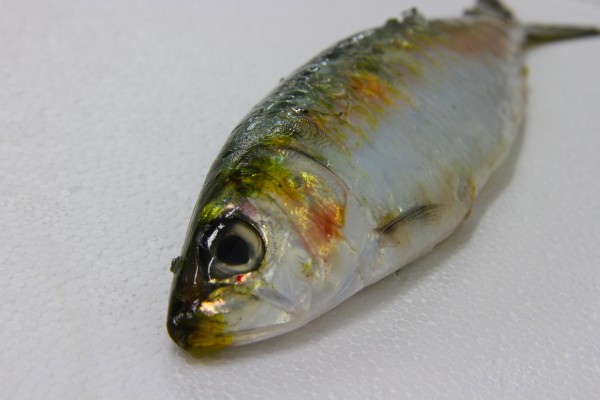
We get a delivery of these every two weeks and it always seems a little nuts to me to import them all way from Portugal given the way that these things flood Florida waters for much of the year and that Portugal is literally an ocean away. But what do I know? What really kills me though is that in all my years fishing south Florida I sent thousands and thousands of sardines to a gruesome death without ever eating one myself. I had to come to NYC to eat my first fresh sardine. I suppose I’ve never been one to take the easy road. Nothing like what you get out of can, fresh sardines are absolutely delicious. I’m serious. Sabiki up a dozen of these, clean them up (it’s not as tedious as you may think), and throw them on the grill. It will blow your mind how tasty they are. And that says nothing of the fact that sardines are pretty much a superfood. Totally sustainable and exceedingly good for you. 50 million tarpon can’t be wrong.
Cuttlefish. Gnarly, right?
I’d never seen the fresh version of this cephalopod until that morning.
These are really difficult to work with. They can be tough, chewy, and they aren’t worth the effort most of the time. Trust me, getting sepia to where you want it to serve sucks. So, unless you’re trying to impress the shit out of someone, just stick to their smaller cousins. Although the ink is pretty useful in pastas. Mostly, I think these cephalopods are the perfect thing for fish geeks like me. Beautiful. Super awesome looking. And they’re not something that you get to see very often.
Our last host on this tour through the halls of these marine Hades’ is at once, dangerous, rare, super-duper wild looking, and if you make a habit of chucking fluff at bonefish and permit, one that you’re going to want to pay special attention to. I give you:
Squilla mantis!
Mantis shrimp. Prawn killer. Sea Locust. Thumb splitter. Call them what you will. I call them nightmare fuel.
Those claws he’s resting on? Serrated, razor-sharp and often described at “raptorial”, they’re used to lacerate, impale, and dismember prey.
Them eyes? No big deal really, they’re only the MOST COMPLEX EYES IN THE ANIMAL KINGDOM. THEY ARE CAPABLE OF DETECTING POLARIZED LIGHT AND MUTLISPECTRAL COLOR VISION AND THEY CAN PROCESS SERIAL AND PARALLEL STIMULI (WHATEVER THE FUCK ANY OF THAT IS). SERIOUSLY THOUGH! WOULDN’T YOU BE YELLING TOO?
You want more? They live inside rocks and burrow into the seafloor and they will track, pursue, and murder prey. Not enough? They can live for over twenty years and they’re monogamous and will breed a couple dozen times throughout their life. Little scary baby, thumb splitters. So, basically, we’re talking about Predator. Awesome. Let’s just hope they never, ever turn into giant mutant mantis shrimp hellbent on conquering earth. Oh. Great. It’s already begun.
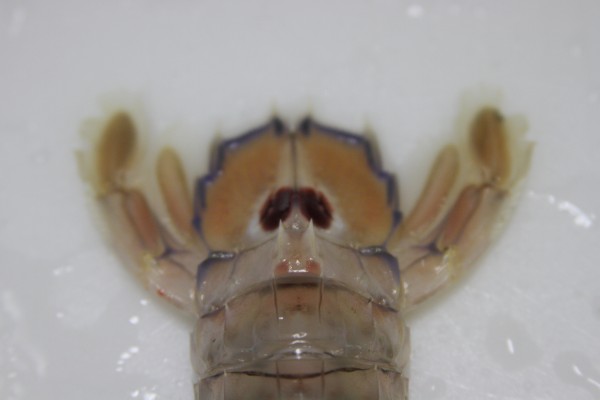
For whatever reason there is a commercial fishery for this particular version of demon crustacean in the Mediterranean and Adriatic seas as well as other bodies of water in and around southern Europe that exceeds 1.5 million pounds of catch annually. Mantis shrimp also factor heavily in the cuisine of southeast Asia. Just be careful if you do eat one. I wouldn’t be surprised if these fuckers are capable of resurrecting themselves too.
At the end of my tour through my wholesale division and the New Fulton Fish Market two things really stuck with me. First, fish, both shell and fin, whether alive or dead are simply the most beautiful creatures on the planet. No other creatures harvested as food are more awe-inspiring than those that swim, crawl, and wait beneath the water. Second, an unfathomable amount of fish comes out of the water everyday, from all over the world before finally coming to rest in our bellies, and the fact that some of these fish populations can produce and be maintained at sustainable levels of harvest is a thing to marvel at. Animals are amazing.
At this point I’m not really interested in making a grand, punctuating statement about the state and health of the oceans, the future of aquaculture, or the fate of seafood industry. I will say there is most certainly a watershed moment in our future that will alter the ways in which we think about seafood and fish in general. But I have no idea what’s going to happen or when. There are huge amounts of moving parts that factor into that equation and quite frankly I’m not smart enough to even venture a guess. And I won’t.
Until that moment arrives my advice is this:
Go out and catch a fish. Hold it, love it, let it go, and watch it swim off. It will make your day.
And avoid mantis shrimp at all costs. I’m not kidding. They’re evil and they’re killers.
-Baz

